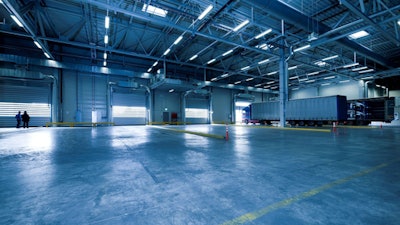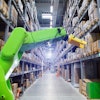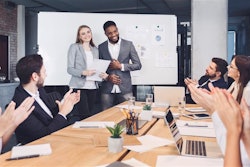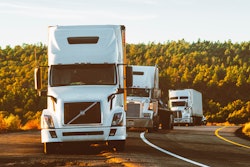
The pandemic gave rise to multiple disruptions in the food supply chain causing depletion of workforce, hygiene awareness and unprecedented need for adoption of efficient technology and management systems. By using the power of artificial intelligence (AI) to optimize complex procedures, warehouse automation tools, and by reconstructing existing policies and management structures, the food supply chain is able to provide food on the table of the consumer.
The food production and logistics sector is no exception to the negative outcomes of this era of pandemic. From field to the consumer, the Coronavirus disease (COVID-19) crisis has touched and impacted every aspect of the supply chain. Considering the vast spread of the virus, movement restrictions of workers and essential items, changes in the pattern of consumption, closure of food production facilities, along with financial constraints have resulted in a dire need of serious ramifications and technological innovations to keep the industry from disintegrating. The disruptions in the food supply chain have led to unforeseen demand of food while increasing the need for an efficient supply chain “management.”
Rise in awareness toward workforce safety and security
COVID-19 has managed to achieve suspension and temporary closedown of production facilities, limit food trade techniques and cause monetary imbalance. This has resulted in a sudden awareness regarding workforce safety, reliability and security. Due to social distancing norms, warehouses have not only reduced laborers but it also resulted in inventory shortages. Companies are forced to preserve sufficient workforce, while pacifying the fear of novel coronavirus in the minds of people working in the production and warehouse facilities. Due to movement restrictions, a shortage of migrant workers also puts an extra strain on the system.
Technology has played an important role here. From providing applications with built-in algorithms that create safer routes and can monitor temperature; to dispensing well-structured automation processes that offer easy check-ins, optimization of delivery batches and have the ability to ensure social distancing of the laborers.
This has allowed companies to adopt smart technology to provide better utilization of space, order fulfillment and managing labor. The applications also seamlessly merge with other critical systems such as shopping carts, online marketplaces and supporting technologies that allow operational efficiency.
Labor interactions are also being promoted by companies in order to reduce access to labor, while guaranteeing their safety. This involves increased flexibility of labor sourcing and timing and replacing workers with machines.
Change in consumer behaviour and concern toward better hygiene
Panic buying and hoarding of essential food led to unforeseen demand of food building a lot of pressure on manufacturers. Living in the pandemic state, the modern consumer has now shifted from offline to online shopping, in order to avoid the risk of community transmission. The consumers are increasingly showing interest in how the food is reaching their plates, despite having absolutely no evidence that food poses a risk to public health in relation to COVID-19.
Moreover, in response to COVID-19, consumers are now seeking plant based proteins, meat alternatives, nutrition and wellness solutions, safe and hygienic products only. All of this has significantly modified and impacted rates of production. With the consumers being concerned about the hygiene and planned maintenance in the factories, manufacturers are under pressure from a quality and safety perspective.
Need for situation management and reconstruction of financial portfolio
In this time of global pandemic, companies are facing problems maintaining their logistic cycle, which is a crucial element of the food industry. The concern affects every part of the process from procurement of resources to the movement of food cycle from producers till the end buyers. Hence, companies are opting for reshoring or also known as nearshoring, i.e., bringing manufacturing tasks in house, or at least closer to home. While some manufacturers are opting for decentralized warehouse facilities in key locations, others are utilizing established third-party logistics (3PL) providers.
It has become crucial to know in real time exactly where or how much of inventory is in each location in order to provide for accurate and speedier delivery. The optimization and decentralization solutions offered by these advanced software’s have automated the storage and retrieval systems assuring better floor space as well. Financial innovations like risk management software, capital assistance programs, portfolio diversification applications and modified business models concerning hygiene, well-being and distancing helped in mitigating the ramifications of COVID-19.
Necessity to invest in warehouse automation to optimize the future of logistics
The need for social distancing has accelerated the dependence upon e-commerce. According to Forbes, COVID-19 accelerated e-commerce growth 4-6 years. Total online spending in May 2020 was up 77% year over year. The increasing dependence upon e-commerce has left managers with no option but to opt for technologically efficient supply chain management systems.
For instance, putting a warehouse management system ensured high volume, fast, accurate fulfilment of orders. By using the power of AI to optimize complex procedures, warehouse automation tools can automate inbound and outbound logistics while decreasing picking and packing costs, reducing workload of warehouse managers, increasing productivity and efficiency of warehouse workflow while up skilling warehouse laborers in the process. Additionally, by planning situation management for the future, warehouses can continue to operate under difficult circumstances while maintaining efficiency and thriving brand reputations with automation tools powered by AI.
While the impact of the pandemic on the food supply chain is still unfolding, several lessons have emerged. Technology has played an important role in the food supply chain during the pandemic, from applications to automation process that ensures employee safety. The pandemic has certainly forced the food industry to revisit food safety and has made way for efficient solutions and innovative products. Good systems have shown remarkable resilience and many problems have been resolved, the most important one being access to food to the consumers.




















